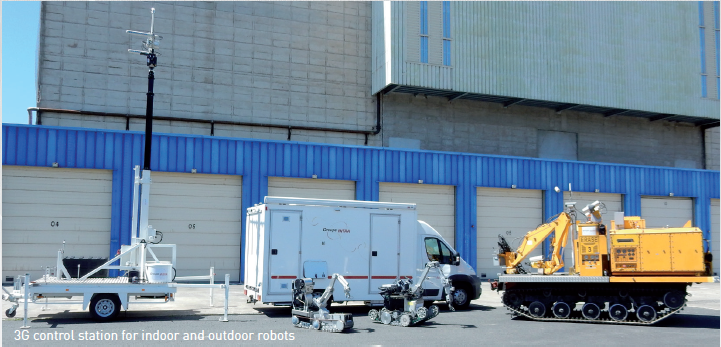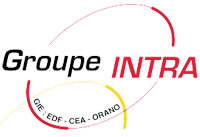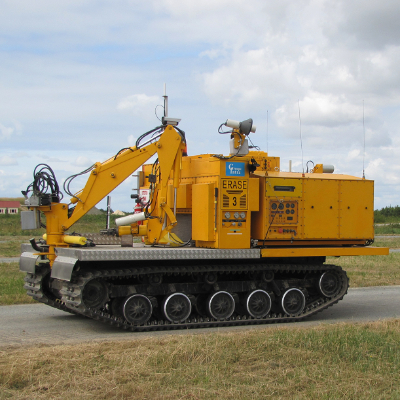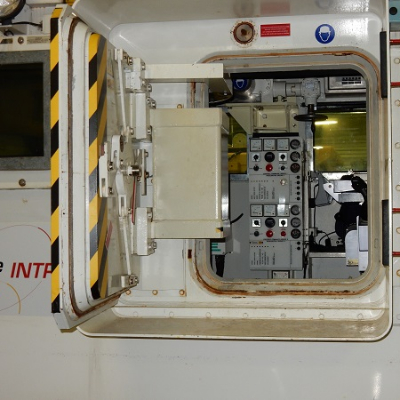Indoor and outdoor intervention equipment
3G Control Station


Missions
The 3G control station usage is for controlling outdoor or indoor robots in First Person View mode., It is designed to operate with a pilot and a co-pilot. The pilot concentrates on guiding the robot, while the co-pilot performs general surveillance, monitors the robot technical parameters and, relays data back to the support base.
Characteristics

- A UHF radio transmitter for indoor robots, remote control.,
- A VHF radio receiver for digital videos, and outdoor machines telemetry, A radio receiver for analog back-up, videos,
- A coaxial modem for indoor robots, data and videos,
- A video recorder and a selector to patch, videos from different sources (outdoor, vehicles, indoor robots, EMOI trailer,, auxiliary cameras, etc.),,
- A Personal Computer to set up equipment, parameters and to display the, Man-Machine Interface controls.
Control workstations are connected to the, computer via a synchronous communication, card. One workstation is dedicated to the robot, locomotion and the robotic arm control., The other is for adjusting video cameras, parameters. Hence, both functions can be, shared by the pilot and the co-pilot if necessary., The synchronous communication card, and the workstations run on custom-made, softwares written in C-language.
The user interface is based on Panorama, supervision software. It gives pilots the possibility, of viewing the status of the vehicle,, of setting the transmission parameters and, of selecting the videos. On a specific video, screen, the co-pilot follows the position of, the outdoor robot on a map, thanks to the, GPS fitted to the robot.
With this system, up to four videos can be, viewed simultaneously with a lag time of less, than 100 milliseconds. These videos may be, forwarded by fibre optics to a support base or, to another control station., Indoor robots transmission range is 350, metres directly, or about 2 miles (3km) with, fibre optics. Outdoor vehicles transmission, range is approximately 3 miles (5 km) depending, on the terrain’s topography.
The 3G Control Station is normally located in, a risk-free radiological zone for personnel, safety.
In order to ensure protection against potential, contamination risks following eventual, changes in weather conditions, the 3G Control, Station is equipped with atmospheric contamination, detectors to alert the personnel if, contamination thresholds are reached, triggering, special safety procedures : domming, personal protective equipment and/or moving, the vehicle away from the hazard zone.





